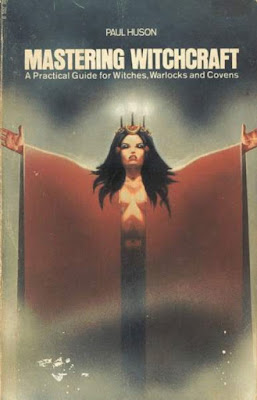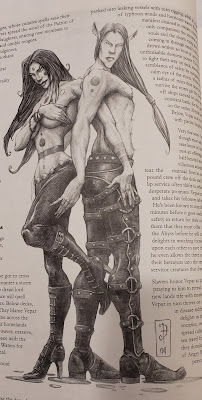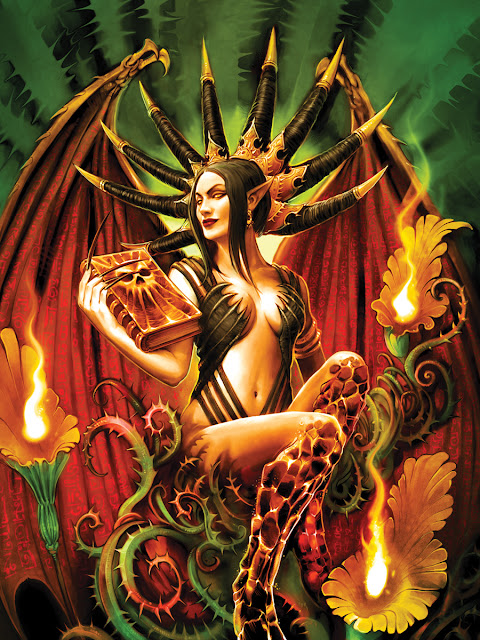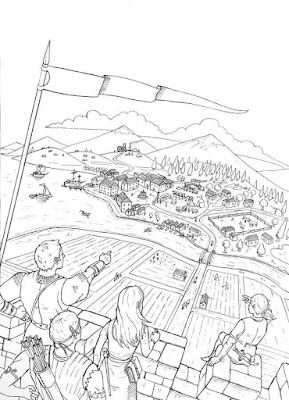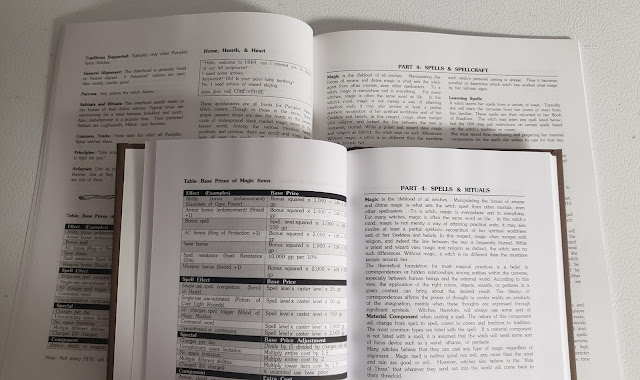1982: Mazes and Monsters
1974 is an important year for the gaming hobby. It is the year that Dungeons & Dragons was introduced, the original RPG from which all other RPGs would ultimately be derived and the original RPG from which so many computer games would draw for their inspiration. It is fitting that the current owner of the game, Wizards of the Coast, released the new version, Dungeons & Dragons, Fifth Edition, in the year of the game’s fortieth anniversary. To celebrate this, Reviews from R’lyeh will be running a series of reviews from the hobby’s anniversary years, thus there will be reviews from 1974, from 1984, from 1994, and from 2004—the thirtieth, twentieth, and tenth anniversaries of the titles. These will be retrospectives, in each case an opportunity to re-appraise interesting titles and true classics decades on from the year of their original release.
—oOo— In 1982 we learned that roleplaying could be dangerous. We learned that it could drive Tom Hanks into identifying with his character to the point where he became the character and so would step out onto the road on his character’s great quest, only this was across New England and not some fantasy land. He would drive his friends away and once lost in a great metropolis—New York (this is the New York in the eighties) and its tunnels below—would be driven mad by dragons above, be menaced by monsters (again New York in the eighties), commit acts of violence against monsters (yes, still the New York of the eighties), and using his spells, desire to fly from the top of the Twin Towers. Ultimately, even after being rescued by his friends and being returned home, he would never escape that character even as his friends became proper adults and left such trivial pursuits behind them. This was a story told on our television screens in the made for television film, Mazes and Monsters, based on the novel by Rona Jaffe, which had been published the year before. The film was the first leading role for actor Tom Hanks and where it had been rushed from print to screen, the book had been rushed from the news to print, for both the film and the book it was based upon were based upon a true story.
In 1982 we learned that roleplaying could be dangerous. We learned that it could drive Tom Hanks into identifying with his character to the point where he became the character and so would step out onto the road on his character’s great quest, only this was across New England and not some fantasy land. He would drive his friends away and once lost in a great metropolis—New York (this is the New York in the eighties) and its tunnels below—would be driven mad by dragons above, be menaced by monsters (again New York in the eighties), commit acts of violence against monsters (yes, still the New York of the eighties), and using his spells, desire to fly from the top of the Twin Towers. Ultimately, even after being rescued by his friends and being returned home, he would never escape that character even as his friends became proper adults and left such trivial pursuits behind them. This was a story told on our television screens in the made for television film, Mazes and Monsters, based on the novel by Rona Jaffe, which had been published the year before. The film was the first leading role for actor Tom Hanks and where it had been rushed from print to screen, the book had been rushed from the news to print, for both the film and the book it was based upon were based upon a true story.In 1979, a young student at Michigan State University, James Dallas Egbert III, had gone missing. Initial investigations and subsequent newspaper reporting linked the disappearance to Egbert having played a strange new game called Dungeons & Dragons. Egbert would be later found by private investigator, William Dear, but the reasons behind the disappearance would not be revealed until after the student’s subsequent suicide and only be properly explained in Dear’s own 1984 book The Dungeon Master. Both Mazes and Monsters and The Dungeon Master would precede the backlash against Dungeons & Dragons that was part of the Satanic Panic of the eighties.
In Mazes and Monsters, Robbie Wheeling (Tom Hanks) attends the small Grant University where he forms a group of friends who play the titular game. All four of them have difficult family backgrounds to one degree or another. Robbie has an alcoholic mother and strict father who fight constantly, and is still tormented by the mysterious disappearance of his older brother, Hall. Jay-Jay (Chris Makepeace) is neglected by his mother who constantly redecorates his room since she can never make up her mind about the best look—the opening look is a brilliantly white Science Fiction room which could be in a Cyberpunk novel—and so wears an ever-changing selection of hats as a means of self-identification. (Of course, as the story progresses and he grows up, he gives up the hats.) Kate (Wendy Crewson) has suffered a number of difficult relationships and comes from a broken home, and Daniel wants to become a video game designer, but his parents have other ideas. All find solace in the game and when Jay-Jay suggests that they take the game to another level by acting it out in the nearby and forbidden Pequod Caverns—accessed by the most cave entrance possible—they agree. However, when they separate to search for the treasure (never separate the party!), Robbie suffers a psychotic episode connected to his brother’s disappearance and now believes he is actually his character, the cleric Pardieu. Consequently, he will break off his relationship with Kate—because clerics are celibate—and disappear on a quest to find his brother. This leads his friends on the quest too in order to find him, because the police, in the form of Lieutenant John Martini (as portrayed by Murray Hamilton, best known for playing the mayor in Jaws), have no idea. After Robbie is returned home, they visit him, and it is made clear that Robbie will never recover from his psychotic episode and will always believe himself to be Pardieu. Together, feeling sorry for him and their contribution towards his current condition, they join Robbie on a game of Mazes and Monsters with Robbie as the Maze Controller. The final words of the film are Kate’s: “And so ... we played the game again ... for one last time.”
Mazes and Monsters is a strange film, a treatment of roleplaying games disassociated from its subject, a film made about roleplaying games in which the author of the book and thus the film have no real idea what a roleplaying game is. For example, in Mazes and Monsters the game, the players finally have the right to be their own Maze Controllers at Ninth Level and the game is played out by candlelight with just the Maze Controller and the three players. It also makes clear that this is a game played by young people with difficult home lives and worse, roleplaying games like Mazes and Monsters have the capacity to exacerbate existing mental health issues and entwine them with the game. There is no real effort to portray roleplaying as a positive activity and there is a certain goofiness to the script that the actors do their very best with, but cannot ultimately escape.
—oOo—Both Rona Jaffe’s original novel and another which involved roleplaying, John Coyne’s Hobgoblin were reviewed in Dragon Magazine #75 (July, 1983). In ‘Tales stranger than fantasy’, Michael Lowery highlights that in both novels, “Above all else, both writers view fantasy gaming as something that must be explained, like teenage alcoholism or joining the Moonies. And examined: Just what is it, anyway, that leads intelligent, seemingly normal people into fantasy role-playing? In both works, game players are eventually shown suffering from dissociative schizophrenia (or some similar malady), which the reader is invited to blame on fantasy role-playing.” He identifies Mazes and Monsters as the better novel, but still calls it, “…[A] Problem Novel, and the Problem is role-playing games.” before concluding that, “Neither of these books is likely to be enlightening to the FRP gamer, except as examples of what reasonably intelligent adult non-players imagine we must be like. In both books, the attainment of mature adulthood is accompanied by the abandonment of role-playing games. Need I say more?”
John J. O’Connor’s review, ‘TV: 'MAZES AND MONSTERS,' FANTASY’ in The New York Times (December, 28, 1982) in contrast, was more positive. “Miss Jaffe takes her story and characters through some fairly predictable turns as the game proceeds to its ''logical extension.'' At one point, the underlying message is spelled out directly: ''The most frightening monsters are the ones that exist in our minds.'' But, gradually, her carefully diagrammed contraption begins to work with reasonable effectiveness. He concludes, “And in the end, the film achieves a broader ''ritesof-passage'' experience than most viewers might be expecting.”—oOo—
Mazes and Monsters is forty years old in 1982 and to mark the occasion, Plumeria Pictures has released the Mazes and Monsters 40th Anniversary Edition Blu-ray. In the words of Lieutenant John Martini, it promises “Swords… poison… spells… battles… maiming… killing!” The production values for the release are basic, but to be fair, it is debatable whether Mazes and Monsters warrants more than that. However, the release features an eight-page booklet containing the essay, ‘The real-life tragedy and sensationalised fantasy behind D&D-inspired movie Mazes and Monsters’ which explores the reality and fantasy behind the film. This is a decent read, but does not throw any more light upon the matter than is already known. It is there more for those who are new to both film and its origins rather than the amateur historian of the hobby or the roleplayer who lived through the period. The film itself is simply presented and as a television film feels dark and claustrophobic.
The release has two extras. The first is a set of English language subtitles, which are absolutely necessary if the viewer wants to watch the film with the other extra, a commentary track from roleplaying luminaries Seth Skorkowsky, Scott Dorward, Joe Trier, Veronica Escamilla-Brady, and Eoghan Falvey. This is a fairly jokey, occasionally funny commentary which ultimately does not add much to the film itself. Only Seth Skorkowsky and Scott Dorward appear to have seen the film before, and both add heft to the commentary where the other participants have little to add. Dorward in particular adds significant context and background to the commentary, not only having familiarity with the film, but also the period when it was made and the New York of the time. There is an interesting conversation to be had about the film and its context, but the Mazes and Monsters 40th Anniversary Edition Blu-ray misses that opportunity with what is an unbalanced commentary cast.
Mazes and Monsters and the Mazes and Monsters 40th Anniversary Edition Blu-ray together look back at a period in the hobby when the wider world is only beginning to become aware of it and it is clear that it has no understanding of what it was. With a film which is more curio than actually good, the Mazes and Monsters 40th Anniversary Edition Blu-ray provides an interesting snapshot of the early eighties that shows how lucky we and the hobby are in the twenty-first century.


.JPG)
.JPG)



.JPG)








